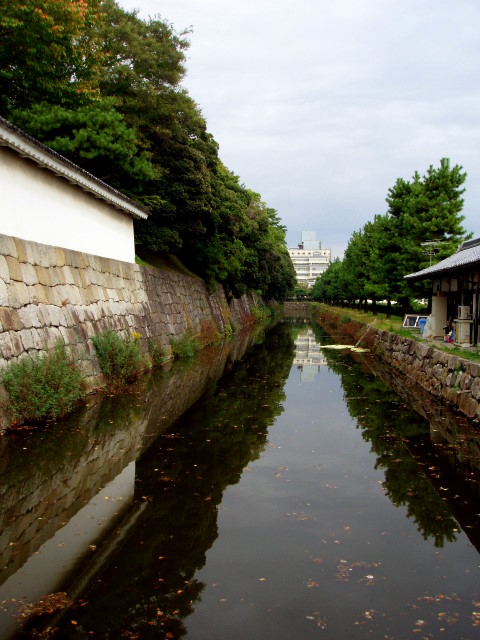23rd October, 2006 - It had been a long day, but today was going to be a little more relaxed...for both myself and T-chan.
We had previously visited the Higashi Hongan-ji temple complex the day before. We now arrived at it's twin temple, the Nishi Hongan-ji (the Western temple). The True Pure Land Sect (Jōdo Shinshū) developed out of the beliefs of the monk Shinran (1173 – 1262), who had been exiled from Hiei-zan in 1207. He believed that pure conviction and faith alone could lead to enlightenment in this life, regardless of whether the person was rich or poor. The original temple was constructed in Higashiyama by Shinran’s daughter, however, was forced to move constantly due to persecution (often from other Buddhist temples). Nishi-Hongan-ji was established in 1591 with the support of Toyotomi Hideyoshi - though it was known as simply Hongan-ji then.
The temple complex is now 27 acres, reduced from the original 80 acres - and the original temple was destroyed in 1617. The Amida-do Hall (above) dated 1760, and alongside sits the main Founders Hall (Goei-do, below) was originally constructed in 1632. Among other things, the temple contains one of the oldest Noh stages in Japan (dating from 1587).
The name Hongan refers to the supposed Primal Vow, Amida Buddha’s promise to save all living beings, and reflects the inclusive nature of the sect. Shinran had a very simple belief... that one heart-felt recitation of the chant "Namu Admida Butsu" was enough to open the gates to the Western Paradise that had been promised by the Amida Buddha. This is chant or or nembutsu roughly translates to "homage to the infinite light".
The sheer simplicity of this belief was in stark contrast to the Pure Land (Jōdo Shū) belief, which had been started by the monk Hōnen, that repitition was the key requirement. It's no wonder why the Jōdo Shinshū was so popular. Very, very simple.

Nowadays there are over 12 million followers and over 10,000 temples across the world... though I have to say, the headquarters here in Kyōto seems far less a temple of the masses these days. Still - it was always wealthy.

The sect became very popular amongst the poorest in Japanese society due to the simplicity of belief-system - and the lack of esoteric practice. Due to the power and wealth the Sect managed to amass, Oda Nobunaga tried unsuccessfully to destroy the sect through military action - but failed. It's hard to believe now, but the monks of Japan were far from peace-loving hippies - they were a feared military force of their own.
Tokugawa Ieyasu, in 1603 also believed the sect to be a threat to his power, but being the devious leader that he was, managed to split the temple between two competing brothers, thus creating the Nishi (west) and Higashi (east) temples that exist today.






No comments:
Post a Comment